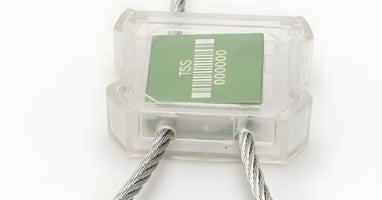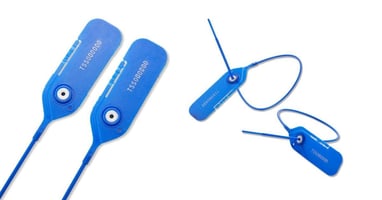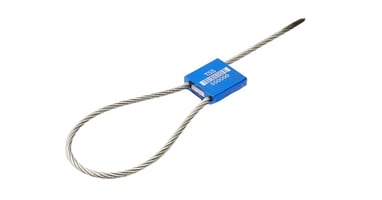In the logistics and supply industry, cargo theft has escalated into an alarming issue. For...
Tips for Maintaining the Integrity of Seals During Transit

Supply chain managers and logistics professionals face countless challenges in ensuring shipments arrive securely and intact. One critical aspect of safeguarding goods is maintaining the integrity of seals during transit. Seals act as a frontline defense against theft, tampering, and contamination. When properly chosen and handled, they provide peace of mind and a layer of security that protects both cargo and your organization’s reputation.
Keeping seals intact and reliable requires more than just applying them. It demands a combination of proper handling techniques, staff training, and regular auditing. Don’t let your seals fail; maintain their integrity with our essential tips to help secure every shipment.
Purchase Seals From a Reputable Source
When it comes to maintaining the integrity of your seals, the first step is to ensure you’re purchasing them from a reputable supplier. Choosing a trusted source minimizes the risk of counterfeit or low-quality seals that compromise security.
At Logimate, we pride ourselves on being a reliable partner for businesses across various industries. We offer a wide range of high-quality seals designed to meet the specific needs of diverse scenarios. Our seals ensure both reliability and effectiveness for your shipments. Partnering with us gives you peace of mind and confidence in your security measures.
Choose the Right Seal for the Job
Selecting the proper seal for your specific application is the foundation of effective security. Not every seal is made from the same materials, and various designs serve different purposes.
For example, plastic security seals are ideal for tamper-evident applications where lightweight yet reliable protection is needed. On the other hand, cable seals or bolt seals may provide stronger protection for containers or high-value shipments.
Some factors to consider when choosing seals include:
- The type of goods being transported
- The mode of transportation (e.g., truck, rail, air)
- Environmental conditions (such as extreme temperatures or humidity)
- Desired tamper-evidence level
Collaborate with your supply chain and logistics team to determine the best seal type for your operation. A well-chosen seal can significantly improve security while reducing potential risks.
Inspect Seals Before Use
Before applying any security seal, inspect it carefully. Even high-quality seals can occasionally have manufacturing defects that compromise performance. Check for cracks, breaks, or visible damage. Ensure the locking mechanism functions correctly and isn’t overly loose or prone to opening prematurely.
Taking just a few moments to inspect seals at this stage can prevent supply chain interruptions and security breaches later.

Train Staff Properly
Knowledgeable staff are essential to maintaining the integrity of your seals. Invest in training programs that educate employees on the correct application, handling, and inspection of seals. Key training topics should include:
- How to properly secure seals to various types of containers or vehicles
- Recognizing tampering signs
- Following documented procedures for seal management
When your staff understands the importance of seals and how to handle them, you build a culture of accountability and professionalism across your logistics operations.
Document Seal Numbers
Maintaining a detailed record of seal numbers for every shipment is a straightforward but critical step. Log each seal's unique serial number and associate it with the corresponding shipment documents. This practice creates a verifiable chain of custody, ensuring that every seal and shipment remains accounted for.
Seal number documentation also simplifies audits and serves as evidence in case of disputes or suspected tampering. Whether your team uses a manual logbook or digital tracking, consistency is key.
Limit Access to Seals
Limit access to your stock of security seals to essential personnel only. By controlling who can handle and distribute seals, you reduce the likelihood of theft, misuse, or tampering within your organization.
Consider storing seals in a locked, monitored location where only authorized individuals can retrieve them. This simple precaution can prevent internal security breaches and maintain the credibility of your transit operations.
Inspect Seals at Every Checkpoint
The integrity of seals can degrade during long journeys if they are ignored for extended periods. Make it a standard procedure to have someone check your seals at every checkpoint. Drivers, warehouse personnel, or customs officials should confirm that the seal remains intact and untampered and the serial number matches the documented records.
Frequent checkpoints help identify any issues early, reducing the risk of compromised shipments reaching their destinations.
Monitor Environmental Factors
Environmental conditions can challenge the durability of seals, especially during transit. Factors such as extreme heat, prolonged exposure to direct sunlight, and exposure to moisture could weaken certain materials.
For instance, plastic security seals may become brittle in freezing temperatures or warp under intense heat. To prevent these issues, choose seals tested for your specific environmental requirements and store them under appropriate conditions to maintain their performance.
Apply Seals Correctly
Even the best seals can fail if they’re not applied properly. Ensure seals are secured tightly to prevent accidental slips or damage during handling. Make sure the seal sits within the container or vehicle's locking mechanism as intended by its design, leaving no gap for tampering.
Incorrectly applied seals will jeopardize security and waste time and resources when they fail unexpectedly. A regular review of application techniques can avoid these mistakes.

Address Tampering Immediately
If any tampering is detected at any point during the shipment, escalate the concern immediately. Do not attempt to patch a damaged seal or bypass tampering signs. This will compromise the integrity of the shipment.
Inform your security team, supervisors, or logistics contacts. Document the incident and involve relevant authorities if necessary. Prompt action safeguards your operation's credibility and enhances trust with clients and customers.
Audit Your Seal Processes Regularly
A robust seal management system requires continuous improvement. By auditing your processes regularly, you can identify weaknesses and address them proactively. Review aspects such as:
- Seal selection standards
- Staff training effectiveness
- Inspection and documentation compliance
Audits also reinforce accountability among employees and ensure your organization remains aligned with industry best practices. Consider scheduling quarterly or bi-yearly reviews to maintain consistent standards.
Ensuring the security of your goods requires strategic planning, oversight, and commitment to every detail. Following these tips for maintaining the integrity of seals during transit will help you protect your shipments against risks while maintaining the trust of your stakeholders and customers.
Each step in seal management serves an essential purpose. Don’t leave your cargo security to chance; implement these best practices to keep your supply chain running smoothly and securely.
Looking to upgrade your seal management? Contact Logimate today to discuss your specific needs. Together, we can create a more secure and efficient system for your business.




